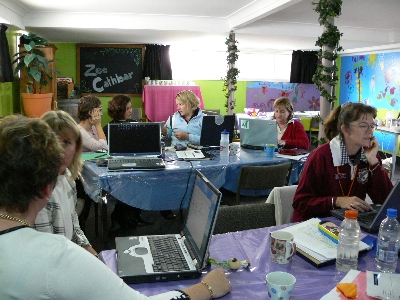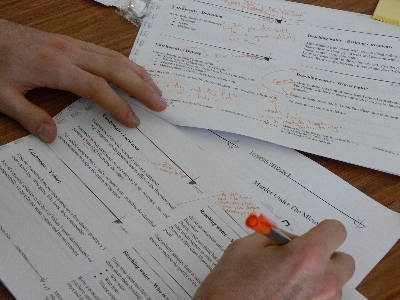A revolution is occurring in education. We are on the cusp of the invention of the New School.

This revolution is being fuelled in part by the social media, globalisation and local diversity. It is also a result of the presence of a new generation of learners—Generation ‘P’, for participatory. These learners have different kinds of sensibilities to the students of our recent past, increasingly expecting to be agents in their own learning rather than passive recipients, absorbing formal, generic content. These forces suggest a fundamental change in the human relations of learning and the formal institutions of schooling in which they have been traditionally located.
The Learning by Design Project uses the new, social media and a more varied and engaging pedagogy to develop dynamic learning environments that are more relevant to our changing times. It builds on the work of the Multiliteracies Project and the analysis of the today’s educational transitions described in New Learning
The project anticipates a transformation in kinds of learners and the kinds of teachers who live in the New School:
The New Learner:
- is actively and purposefully engaged in their learning; the most effective learning is engaged learning.
- belongs in their learning, connecting their identity, subjectivity and agency into their learning.
- brings their experience, interests and voice to the learning task at hand.
- takes responsibility for their learning through a measure of autonomy and self-control.
- is a knowledge producer, drawing upon a range of available knowledge resources.
- works effectively in pairs or groups on collaborative knowledge projects, and creates knowledge to be shared with peers.
- continues to learn beyond the classroom, using the social media to learn anywhere and anytime—the phenomenon of ubiquitous learning.
- is comfortable in multimodal, digital knowledge creation spaces, bringing together text, image, diagram, video, sound, dataset, instant messaging, etc.
- critically self-assesses and reflects upon their learning.
- uses and gives feedback in ‘social networking’ interactions, learning in recursive feedback loops involving peers, parents, experts and invited critical friends—as well as teachers.
- engages in intensive horizontal communications and collaborative learning.
- is a comfortable player in environments where intelligence is collective—not just the sum of things that can be retained in the individual’s head, but a capacity to source specialised knowledge from experts or group members, to negotiate and synthesise knowledge in groups and to search and critically evaluate knowledge from a variety of online sources.
The New Teacher:

- takes a greater degree of control of their professional lives, designing learning experiences for their learners based on broad learning goals and curriculum standards.
- is a purposeful learning designer, rather than (just) a curriculum implementer.
- is able to ‘let go’, allowing learners to take more responsibility for their own learning
- knows that to be authoritative does not mean being authoritarian.
- is comfortable in online learning design and delivery platforms—spaces with are not just lesson planning, nor just a textbook, nor just a student workbook.
- is comfortable working with learners in new, multimodal, online social media spaces.
- has a new professional identity, as teaching increasingly moves from being the talking profession to the online documenting profession.
- is collaborative, sharing their learning designs online, reusing and adapting others’ learning designs, jointly writing learning designs in teams, peer reviewing other’s learning designs, team teaching in classes that can at times be smaller-than-normal and bigger-than-normal—in other words, developing a professional culture of mutual support and sharing.
- puts more work into documentation of best practices whilst creating less work for themselves through a culture of sharing and building a reusable knowledge bank.
- engages their learners’ identities and harnessing lateral knowledge-making energies amongst learners.
- manages a multifaceted learning environment in which not every student has to be on the same page at the same time.
- differentiates instruction in order to cater effectively to learner diversity.
- is a leader in a dynamic, knowledge-producing community.
- is practitioner-researcher, building and interpretting the evidence base of pedagogical inputs in relation to learner outcomes.
- creates and implements ubiquitous assessment ‘for learning’, not just end-of-program assessment ‘of learning’.
- creates and applies evaluation protocols to measure the effectiveness of pedagogies and programs.
